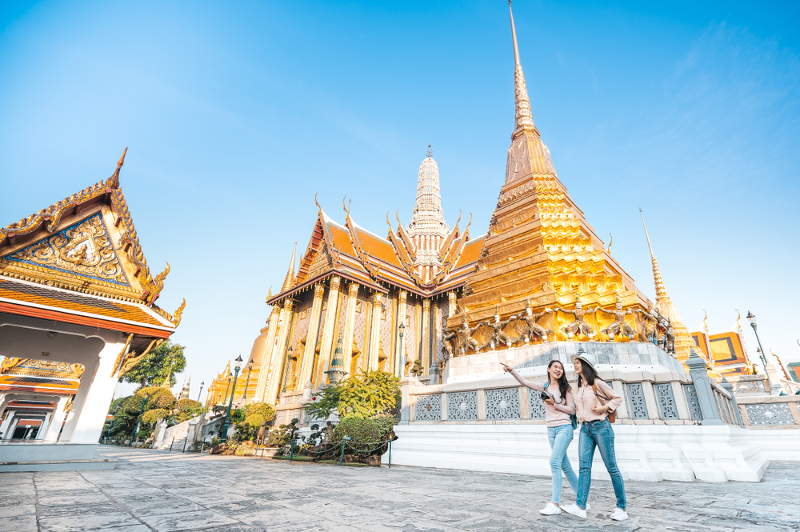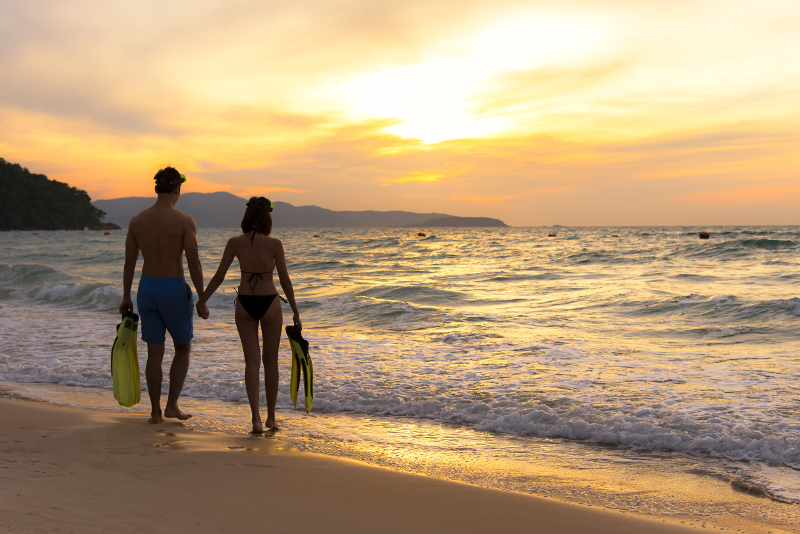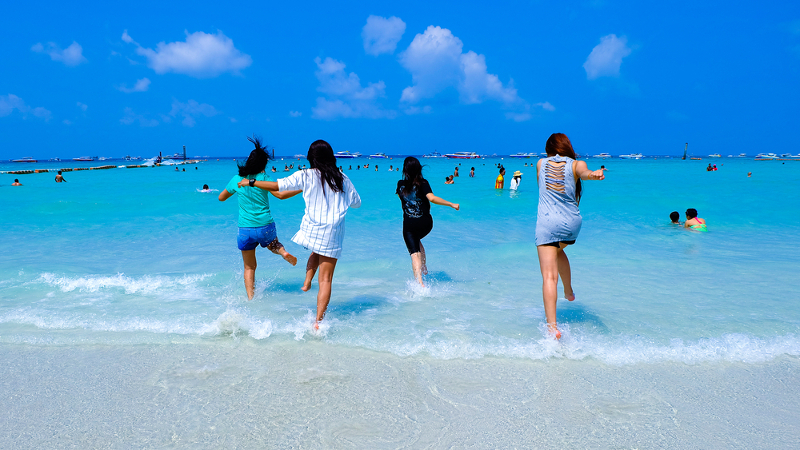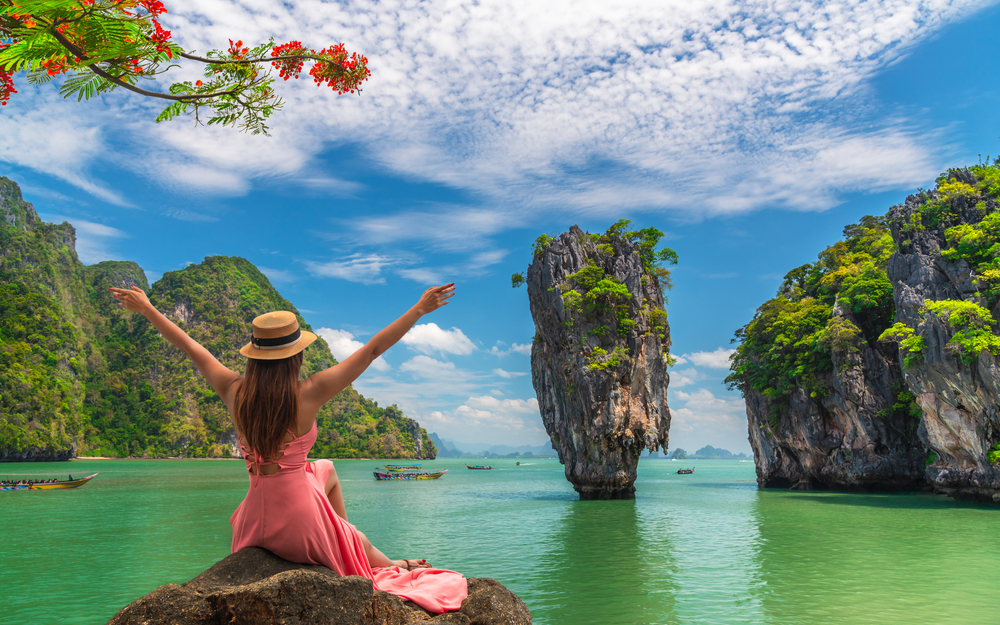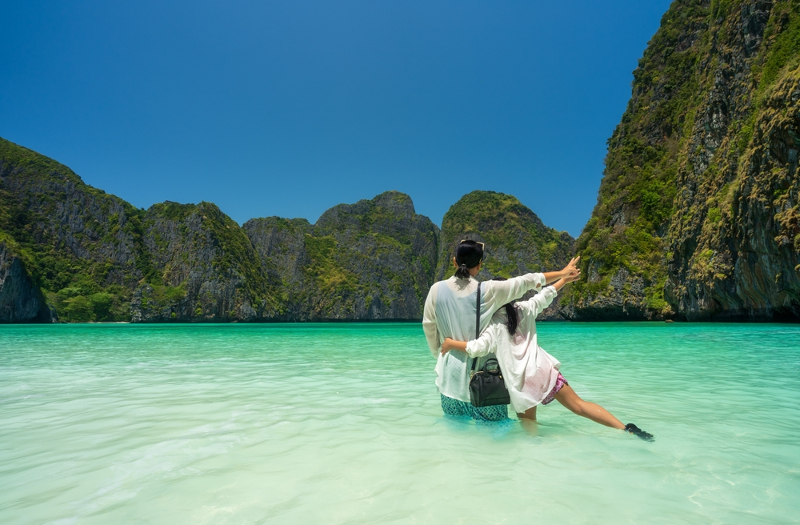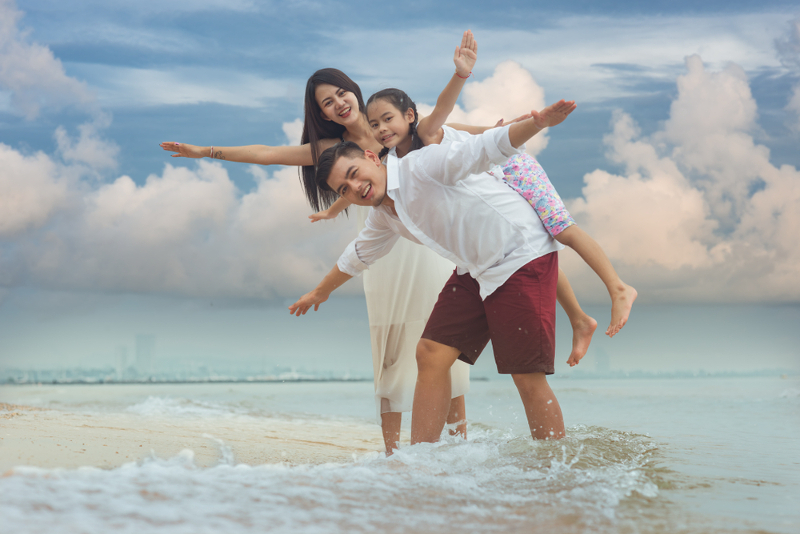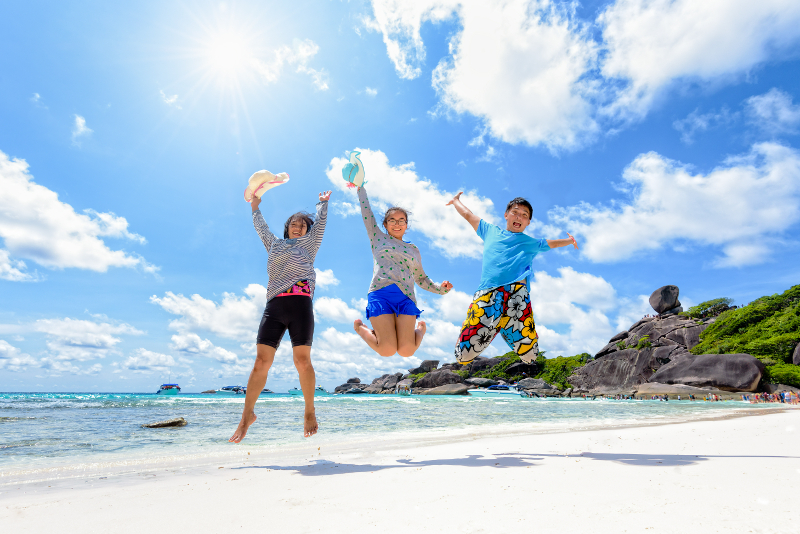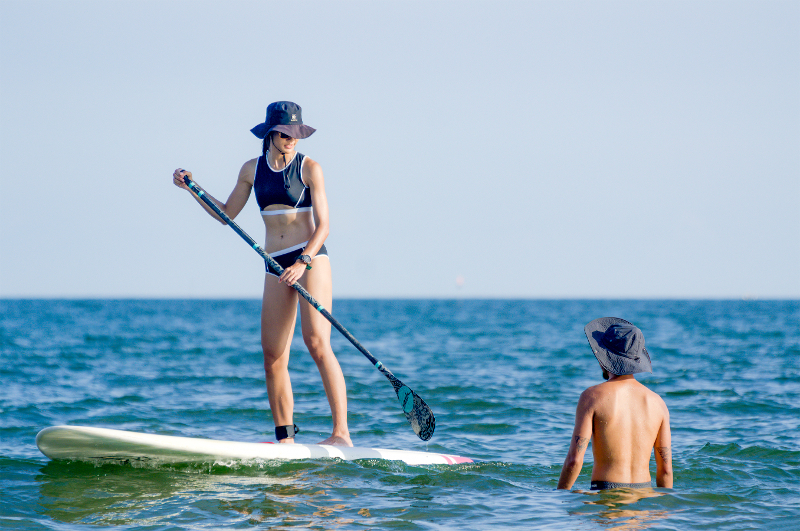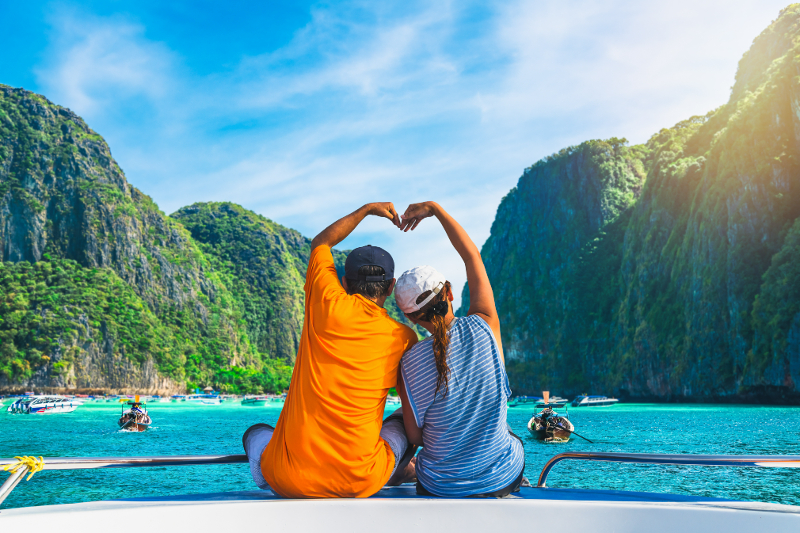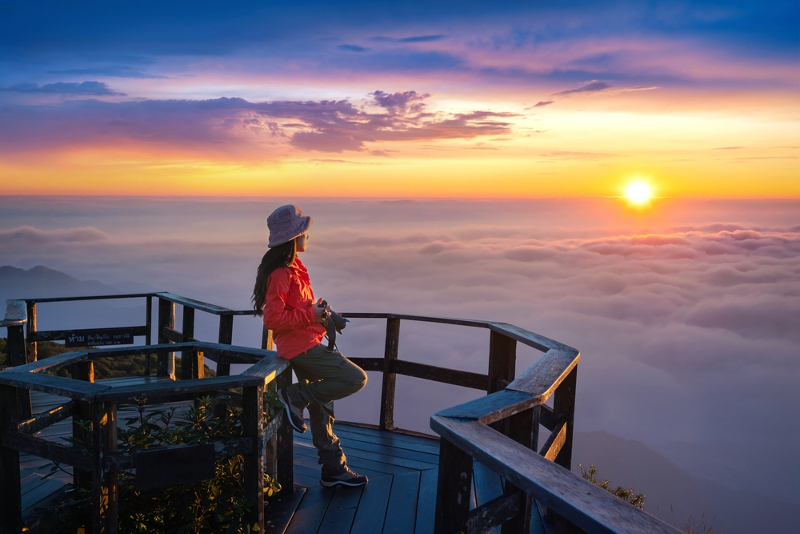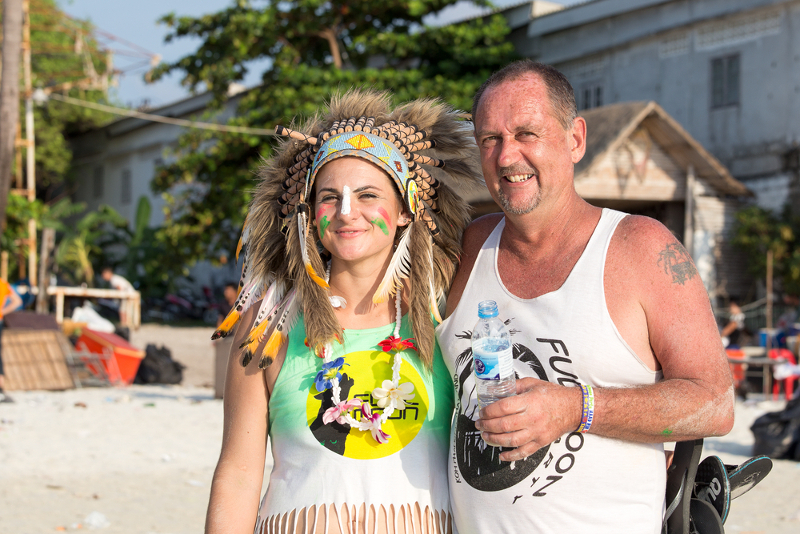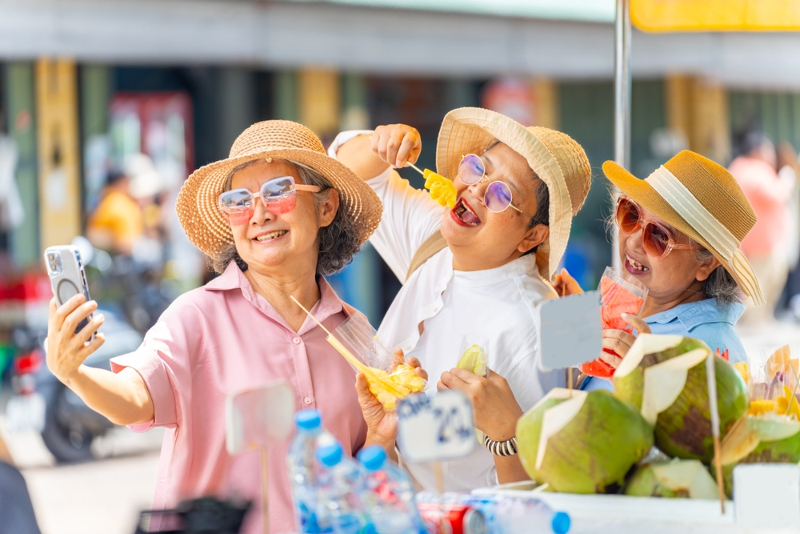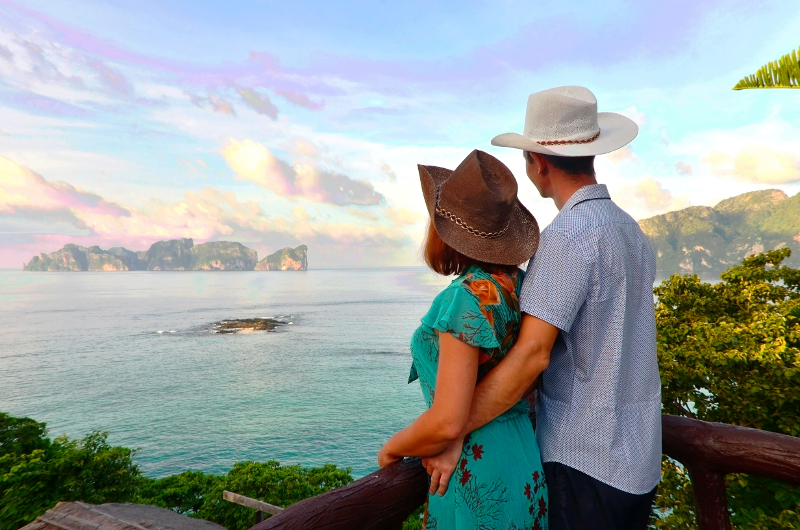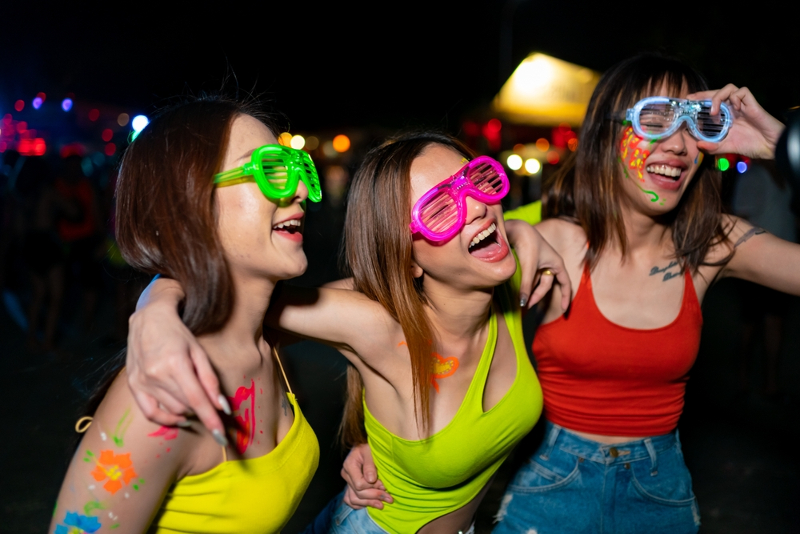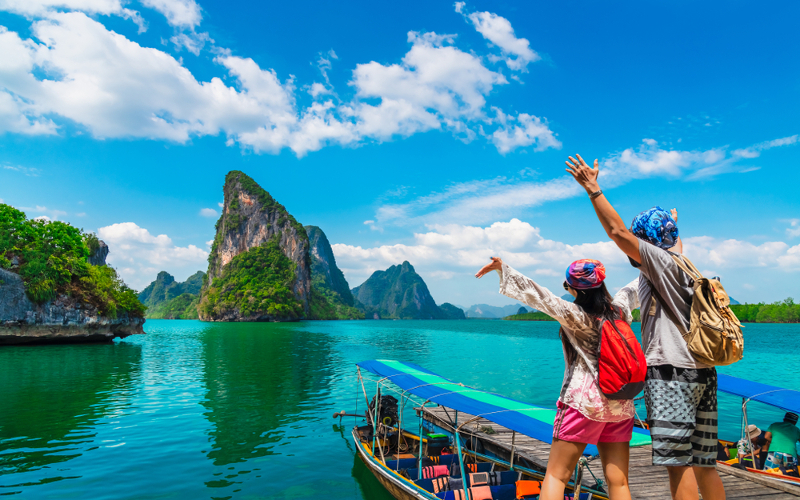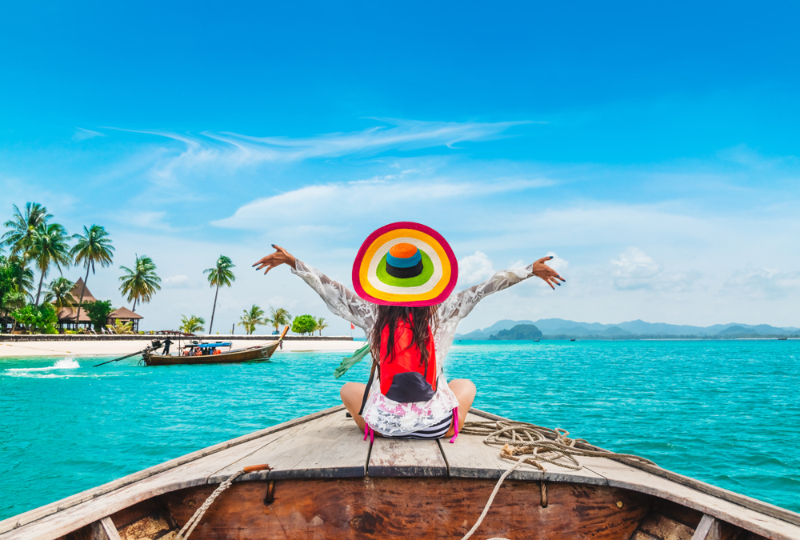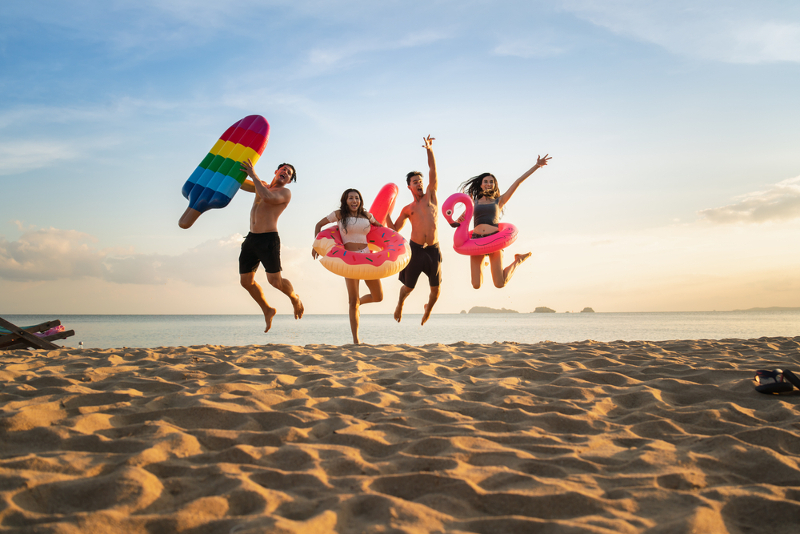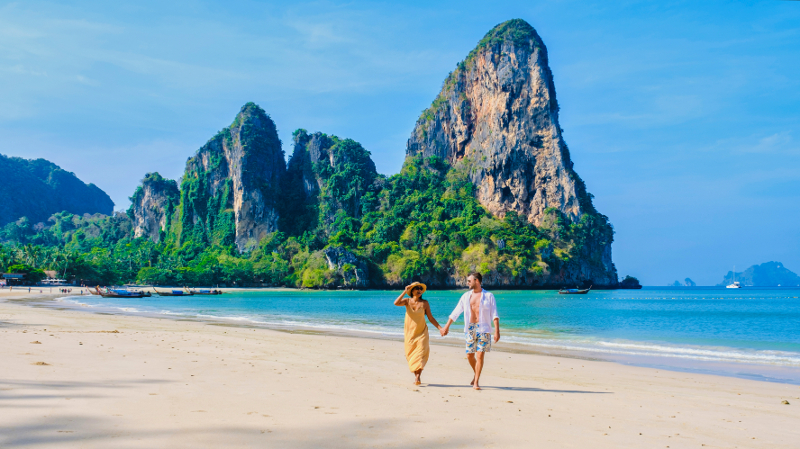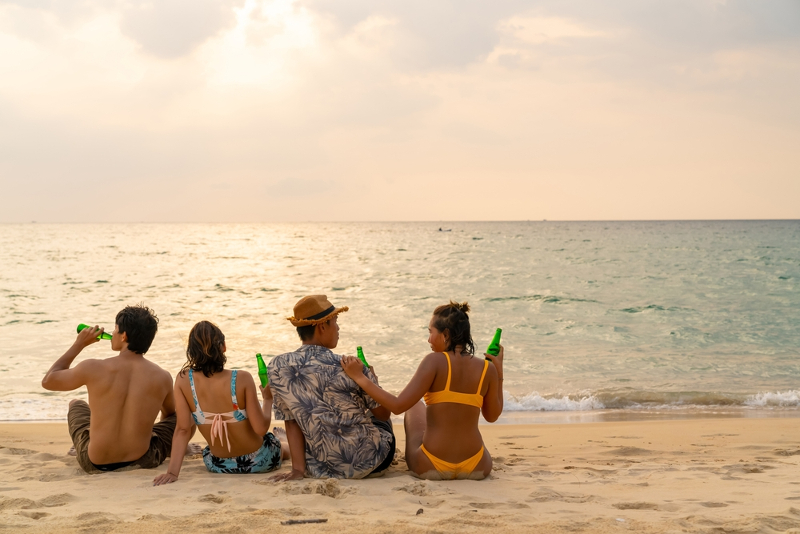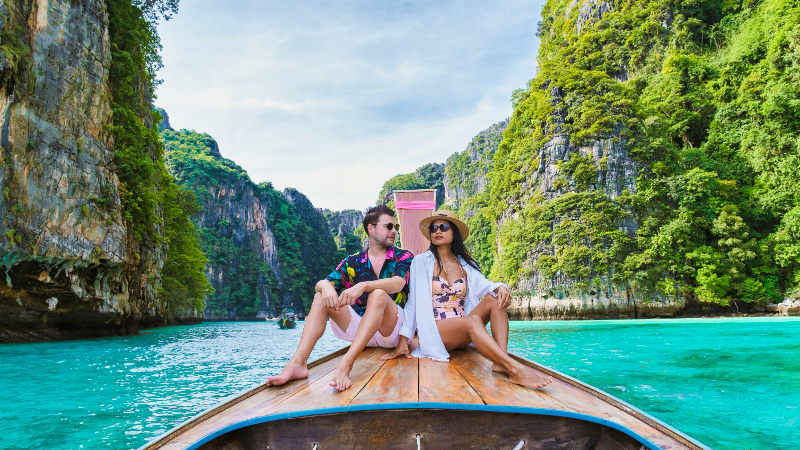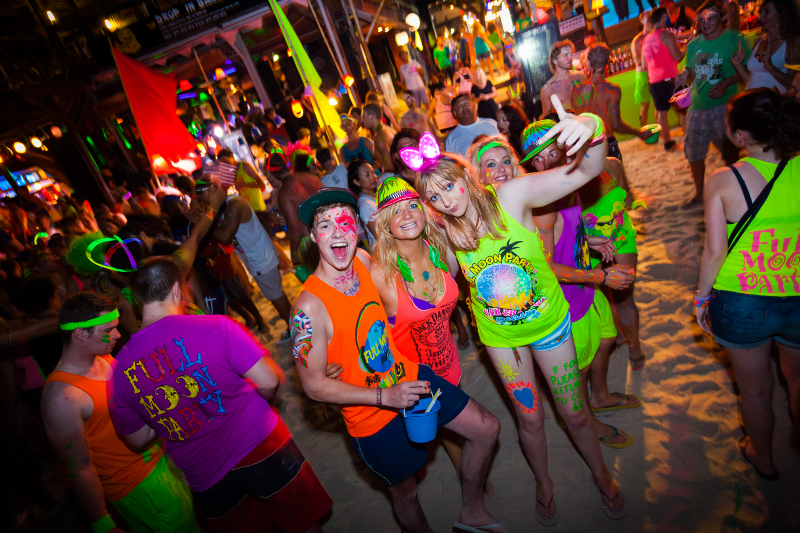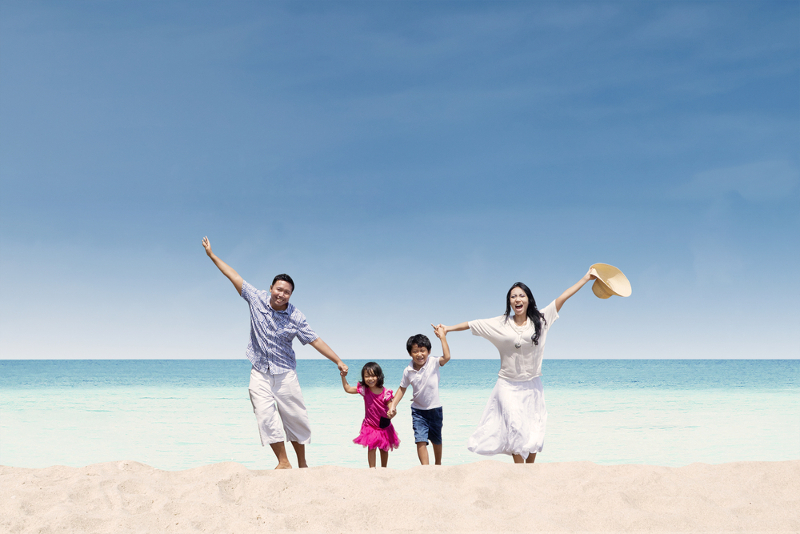Discover the best places to visit in Thailand in August, monsoon travel tips, weather insights, and essential items to pack for a smooth journey.
Thailand in August
Thailand reveals its tropical attractiveness in August with a distinct charm. The nation's natural beauty is the main attraction, even during the rainy season. colorful plants and animals cover lush settings, making them even more colorful. The area is beautiful as the emerald rice paddies shimmer in the odd downpour. Celebrations like the Queen's Birthday bring the cultural tapestry to life and provide a window into Thailand's rich past.
Even though they occasionally get rain, islands like Phuket and Koh Samui are known for their immaculate beaches and glistening waters, which make them perfect for water sports like snorkeling. Through festivals and customary rituals, Chiang Mai maintains its cultural grandeur in the north. Thailand's August offers a chance to experience the country's natural beauty, participate in cultural events, and partake in a variety of activities amid its breathtaking scenery.
Even though they occasionally get rain, islands like Phuket and Koh Samui are known for their immaculate beaches and glistening waters, which make them perfect for water sports like snorkeling. Through festivals and customary rituals, Chiang Mai maintains its cultural grandeur in the north. Thailand's August offers a chance to experience the country's natural beauty, participate in cultural events, and partake in a variety of activities amid its breathtaking scenery.
Thailand’s Weather in August
Thailand's rainy season, which runs from July to October, begins in August. Rain is likely to fall often, usually in the afternoons or nights, and usually in brief but intense downpours. The month usually sees more than 200 mm of rain. The typical humidity is between 80 and 90 percent, which makes it feel hotter than the actual temperature, which is between 24 and 25 degrees Celsius at night and 30 to 33 degrees Celsius during the day.
Thailand's temperatures are still mild overall, however they get a little colder at night in the north. Regional variations in rainfall are common; Koh Samui often receives less rainfall than Phuket and Krabi. Expect rain wherever you go because August is one of Thailand's wettest months overall.
Thailand's temperatures are still mild overall, however they get a little colder at night in the north. Regional variations in rainfall are common; Koh Samui often receives less rainfall than Phuket and Krabi. Expect rain wherever you go because August is one of Thailand's wettest months overall.
What to Pack For Thailand in August
- Lightweight, breathable clothing: Opt for fabrics like cotton or linen to stay cool and comfortable in the heat and humidity.
- Rain gear: Pack a waterproof jacket or compact umbrella for sudden downpours.
- Sun protection: Bring sunscreen, sunglasses, and a wide-brimmed hat to guard against intense UV rays during sunny intervals.
- Comfortable walking shoes: Essential for exploring markets, temples, and city streets, especially when surfaces are wet.
- Swimwear: Ideal for beach days, poolside relaxation, or spontaneous dips in waterfalls.
- Insect repellent: Protect yourself from mosquitoes, especially in the evenings and near water.
- Reusable water bottle: Stay hydrated as you explore, especially in the humid climate
Reasons To Visit Thailand in August
- Lush Green Landscapes: The monsoon rains revitalize Thailand’s countryside, making rice fields, jungles, and gardens exceptionally lush and photogenic.
- Fewer Tourists: August is less crowded than peak season, allowing for a more peaceful experience at popular sites and better opportunities for authentic interactions.
- Lower Prices: Many hotels and airlines offer discounts, making travel more affordable for budget-conscious visitors.
- Unique Festivals: Experience local culture through rainy season festivals and events that offer insight into Thai traditions.
- Natural Beauty: Waterfalls are at their most powerful, rivers are full, and the countryside is alive with color, perfect for nature lovers and photographers.
Places to visit in Thailand in August
1. Wat Phra That Doi Suthep
Suthep is a district in and of itself, situated on Chiang Mai's western fringes. Additionally, one of the most revered temples in the area is the beautiful Wat Phra That Doi Suthep, which is perched atop it. It is said that if you do not see this temple, your trip to Chiang Mai is never complete. This attraction's stunning architecture and ideal location atop Doi Suthep mountain make it utterly captivating! This temple offers a captivating view from its terrace, which is surrounded by seven-headed serpents along the 309 stairs. If you're looking for peace and spirituality, visit this temple for a captivating experience.
Price: 30 Baht (approx. INR 65)
Timings: 6:00 AM – 6:00 PM
Price: 30 Baht (approx. INR 65)
Timings: 6:00 AM – 6:00 PM
2. The Grand Palace
Located in the center of Bangkok, Thailand, the Grand Palace is a representation of the rich history and culture of the nation. For more than 150 years, it was the official residence of Thai kings, having been constructed in 1782. This magnificent monument, which combines European and traditional Thai elements, is an architectural gem. Its elaborate decorations, golden spires, and elaborate detailing captivate visitors. The Temple of the Emerald Buddha (Wat Phra Kaew), regarded as Thailand's most revered Buddhist temple, is one of its primary attractions. In addition to being a historical landmark, the Grand Palace is the location of significant royal gatherings and festivities.
Price: 500 Baht (approx. INR 1030)
Timings: 8:30 AM – 3:30 PM
Price: 500 Baht (approx. INR 1030)
Timings: 8:30 AM – 3:30 PM
3. The Sanctuary of Truth
The Sanctuary of Truth in Pattaya is the ideal option if you're searching for a vacation spot close to Bangkok that lets you unwind and completely rejuvenate. With breathtaking views and lots of places to unwind, this location is more than simply a tourist destination; it is also a lovely center for the arts and culture. The Sanctuary of Truth, the world's largest wooden temple, uses its exquisite wooden carvings to tell tales and history about our life's ambitions and the truths we come across.
Price: Around 500 Baht (discounts for children)
Timings: 8:00 AM – 6:00 PM
Price: Around 500 Baht (discounts for children)
Timings: 8:00 AM – 6:00 PM
4. Nong Nooch Tropical Garden
Spanning over 500 acres, Nong Nooch Tropical Garden in Pattaya is a botanical wonderland. It features themed gardens, cultural shows, and a vast collection of tropical plants. In August, the gardens are especially lush, and the cultural performances provide shelter during rain showers. The garden also hosts daily Thai cultural performances, elephant shows, and martial arts demonstrations, making it a blend of nature and tradition. Nong Nooch is not just a feast for the eyes but also an educational journey, promoting botanical research and conservation while delighting visitors of all ages.
Price: Starting at 450 Baht
Timings: 8:00 AM – 6:00 PM
Price: Starting at 450 Baht
Timings: 8:00 AM – 6:00 PM
5. Pattaya Floating Market
The distinctive Thai culture, mouthwatering regional cuisine, and some flashy antiques made by regional craftspeople can all be found in Pattaya's Floating Market. You may explore this market on foot or by taking a delightful boat ride through canals. Divided into four zones representing different regions of Thailand, it offers live performances, boat rides, and culinary delights. August’s rain adds to the market’s authentic atmosphere.
Price: Entry fee varies, generally free to enter
Timings: 9:00 AM – 8:00 PM
Price: Entry fee varies, generally free to enter
Timings: 9:00 AM – 8:00 PM
6. The Big Buddha
The Big Buddha is situated in Hong Kong, a thriving city renowned for its varied culture, rich history, and striking skyline. The enormous bronze statue known as the Big Buddha, or Tian Tan Buddha, is located on Hong Kong's Lantau Island. One of the biggest seated Buddha statues in the world, this magnificent figure is 34 meters tall. It represents the healthy coexistence of people and religion, as well as man and nature. Early morning is the ideal time to visit the Big Buddha because it is cooler outside and the attraction is less crowded.
Price: Free entry
Timings: 10:00 AM – 5:30 PM
Price: Free entry
Timings: 10:00 AM – 5:30 PM
7. Ramkhamhaeng National Museum
Ramkhamhaeng National Museum, located in Sukhothai opposite the Sukhothai Historical Park, is dedicated to preserving and showcasing artifacts from the ancient Sukhothai Kingdom and surrounding regions. Opened in 1964, it houses a wide array of items discovered in local archaeological excavations, including Buddha statues, stone inscriptions, ceramics (notably Sangkhalok ware), ancient weapons, and everyday objects. The museum is thoughtfully divided into three sections: a main museum building, the Lai Sue Thai Chet Roi Pi Memorial Building, and an outdoor area with larger artifacts and replicas.
Price: Approx. 100 Baht (check locally)
Timings: 9:00 AM – 4:00 PM (closed Mondays; check locally)
8. Jim Thompson House Museum
One of Bangkok's most popular tourist destinations, the Jim Thompson House is a model for historical architecture and houses a museum-like collection of unique but tiny artwork. One of the most renowned Americans in modern Thai history is Jim Thompson, an American who founded the silk business in Thailand following World War II. The complex of residences, which was finished in 1959, includes a number of historic Thai houses and buildings that the American entrepreneur acquired while visiting Bang Krua and Ayutthaya.
Price: Around 200 Baht (check locally)
Timings: 10:00 AM – 6:00 PM
Price: Around 200 Baht (check locally)
Timings: 10:00 AM – 6:00 PM
9. Chatuchak Weekend Market
With more than 35 acres and 15,000 vendors, Bangkok, Thailand's Chatuchak Weekend Market is a bustling and overwhelming place. This market, which is only open on weekends, draws a lot of people and is like a busy metropolis. When you enter this market, you may see sections dedicated to various products, such as books, art, plants, and even pets. Thai traditional cuisine, as well as sizzling street food, are available to foodies. However, this market is more than just a marketplace; it's a cultural encounter, a meeting place for locals and visitors, and one of the greatest ways to feel Bangkok's vibrant energy.
Price: Free entry
Timings: Saturday and Sunday, 9:00 AM – 6:00 PM
Price: Free entry
Timings: Saturday and Sunday, 9:00 AM – 6:00 PM
10. Bamboo Island
Bamboo Island, also known as Koh Mai Phai, is a small, heart-shaped island located about 5 kilometers northeast of Koh Phi Phi Don in the Phi Phi archipelago. Famous for its pristine white sandy beaches and crystal-clear turquoise waters, it offers an idyllic escape from the busier nearby islands. The island is mostly covered by lush casuarina trees, providing natural shade. Bamboo Island is a popular snorkeling spot, with vibrant coral reefs and abundant marine life just offshore. Accessible by long-tail boat or speedboat, it forms part of a national park, and an entrance fee is required. Its tranquil atmosphere makes it perfect for relaxing and exploring nature.
Price: National park fee applies (approx. 400 Baht; check locally)
Timings: Daytime visits (boat tours typically 8:00 AM – 4:00 PM)
Price: National park fee applies (approx. 400 Baht; check locally)
Timings: Daytime visits (boat tours typically 8:00 AM – 4:00 PM)
FAQs
1. What are some of the best things to do in Thailand in August?
Ans: In August, Thailand offers a mix of indoor and outdoor experiences. Explore cultural landmarks like the Grand Palace and Wat Phra That Doi Suthep, wander through lush gardens such as Nong Nooch, and enjoy shopping at Chatuchak Weekend Market. Take advantage of fewer crowds to visit museums, markets, and temples at a leisurely pace. Nature lovers can chase waterfalls, trek in national parks, or relax on quieter beaches. Don’t miss local food experiences and rainy season festivals.
2. Is August a good time to travel to Thailand?
Ans: August is the heart of the monsoon season, so expect frequent rain and high humidity. However, it’s a great time for travelers seeking lush scenery, lower prices, and fewer tourists. With flexibility and preparation, you can enjoy Thailand’s attractions with less hassle and more authenticity. Many regions, especially the Gulf Coast islands, experience less rain, making them ideal for a summer getaway.
3. How rainy is Thailand in August?
Ans: Thailand receives about 250 mm of rain in August, with showers occurring most often in the afternoons and evenings. While downpours can be heavy, they are usually brief, allowing for plenty of outdoor activities in between. The rain brings cooler temperatures and vibrant landscapes, but it’s wise to plan indoor options and carry rain gear.
4. Is it worth going to Phuket in August?
Ans: Yes, Phuket is lush and beautiful in August, though rain is common. The island is less crowded, and hotel rates are lower. While some beach and water activities may be affected by weather, there are still plenty of dry spells for exploring. Attractions like the Big Buddha, Old Phuket Town, and local markets remain accessible and enjoyable.
5. Is Bangkok worth visiting in August?
Ans: Absolutely, Bangkok remains lively and full of energy in August. While rain showers are frequent, the city’s temples, museums, shopping malls, and street food scenes are largely unaffected. With fewer tourists, you can explore at your own pace. Just plan for occasional rain delays and enjoy the city’s vibrant culture indoors and out.
6. Which part of Thailand is best to visit in August?
Ans: The Gulf Coast islands such as Ko Samui, Ko Pha Ngan, and Ko Tao, generally experience less rain than the Andaman Coast during August. These islands offer beautiful beaches, lively nightlife, and a range of activities. Central and northern regions like Bangkok and Chiang Mai are also worthwhile, with plenty of cultural and historical sites to explore between showers.
Want best packages handpicked of Thailand just for you?
Share your travel needs and our travel experts will reach out to you.












